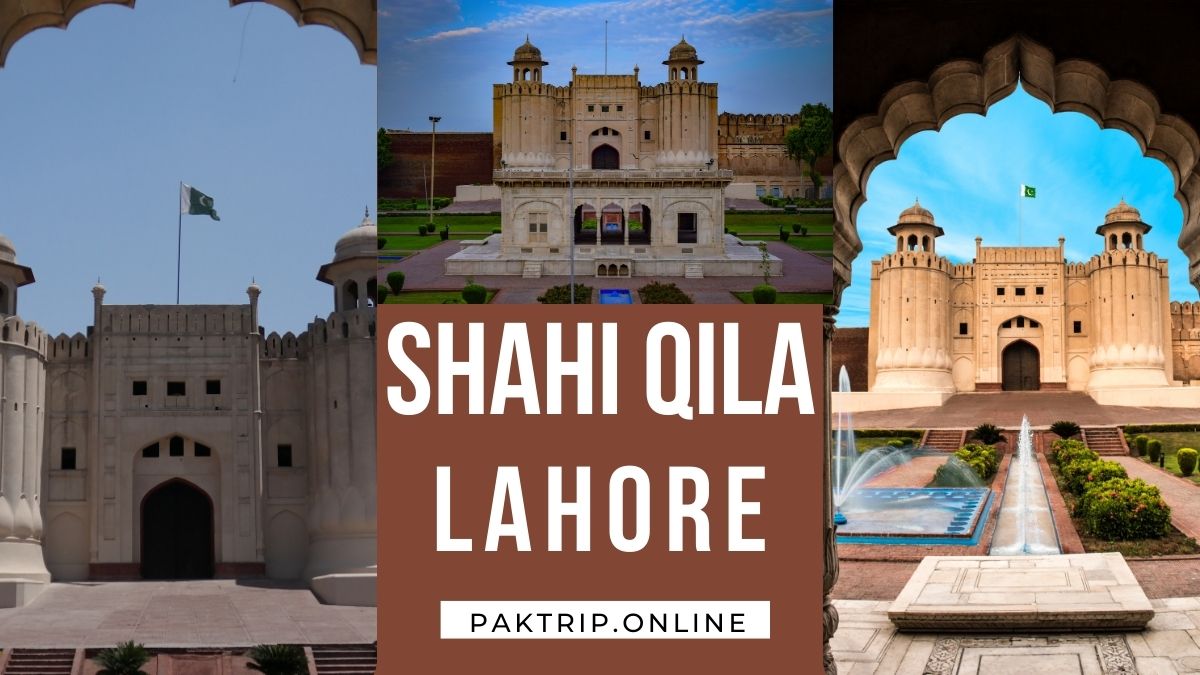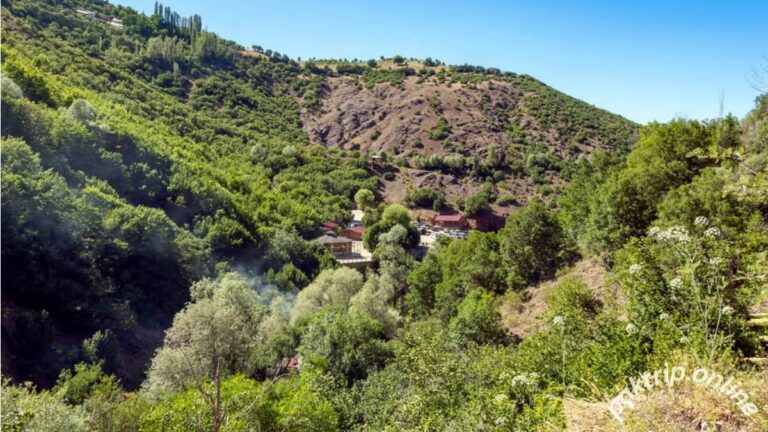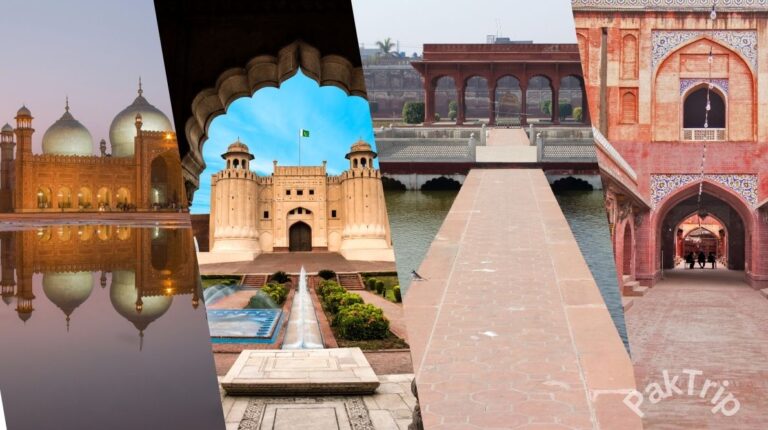Shahi Qila Lahore: Unveiling the Pakistan’s Historical Fort
Shahi Qila Lahore, also known as Lahore Fort, stands proudly in the heart of Lahore, Pakistan, showcasing the city’s rich history, culture, and architecture. This majestic fort, a symbol of Pakistan’s heritage, has witnessed centuries of political changes and cultural evolution. Built during the Mughal Empire, Shahi Qila is not only a prime tourist destination but also a site that encapsulates the beauty and artistry of ancient empires.
In this article, we’ll dive into the history, architecture, and cultural significance of Shahi Qila, bringing this incredible site to life for readers of all ages.
The Historic Foundations of Shahi Qila
Shahi Qila dates back to ancient times. Originally, a simple structure stood where the fort exists today, elevated on a high mound above the city’s surface. This ancient mound was used by rulers to guard the city due to its height and strategic location. Over time, however, it transformed into something much grander and more elaborate.
The major construction of Shahi Qila began in 1556, led by the Mughal Emperor Akbar. His vision was to build a stronghold that represented the might and elegance of the Mughal Empire, which he achieved by 1605. Yet, Akbar wasn’t the only ruler to contribute to this magnificent fort. Generations that followed, from Mughal emperors to Sikh leaders, added their unique touches to the fort’s structure and design. As a result, Shahi Qila is now a spectacular blend of various architectural styles, each representing a different era.
Architectural Marvels Within Shahi Qila
The architecture of Shahi Qila is genuinely awe-inspiring. The fort is a wonderful example of Mughal architecture, boasting intricate designs, strong defenses, and impressive structures. Shahi Qila houses several prominent structures with history and purpose.
Among the most iconic areas within Shahi Qila Lahore are the breathtaking Sheesh Mahal, also known as the Palace of Mirrors, the grand Alamgiri Gate, the elegant Naulakha Pavilion, and the serene Moti Masjid, or Pearl Mosque. Each part of the fort tells a story of craftsmanship and dedication to beauty, blending practical architecture with artistic expression.
Sheesh Mahal: The Palace of Mirrors
The Sheesh Mahal, or Palace of Mirrors, is one of the most enchanting places within Shahi Qila. This palace is a brilliant example of intricate craftsmanship built by Mughal Emperor Shah Jahan for his beloved wife. The walls and ceilings of Sheesh Mahal are adorned with small, delicately placed mirrors imported from Syria. These mirrors create a mesmerizing effect when light reflects on them, casting a soft, glowing beauty across the room.
The Sheesh Mahal features tiny, colorful glass pieces that make up floral and geometric patterns, enhancing its ethereal beauty. With just a single lamp lit at night, the entire palace seems to glow, creating a magical ambiance.
Naulakha Pavilion
In addition to Sheesh Mahal, the Naulakha Pavilion stands as one of the fort’s most treasured sites. Built by Emperor Shah Jahan, the pavilion got its name from the estimated nine lakh rupees (or nine hundred thousand rupees) it cost to build. With its beautiful marble latticework and inlaid semi-precious stones, the Naulakha Pavilion represents the elegance of Mughal art. The lattice windows allow sunlight to filter in softly, creating a serene and peaceful atmosphere within.
The Mighty Alamgiri Gate
The grand Alamgiri Gate is another defining feature of Shahi Qila. Built during the rule of Emperor Aurangzeb in the 17th century, this gate serves as the main entrance to the fort. The gate is a powerful symbol of strength, with its towering arches and solid structure, built to defend against invasions. Today, it stands as a testament to the might of the Mughal Empire and a historic entrance to one of Pakistan’s most visited sites.
Moti Masjid: The Pearl Mosque
Among the hidden treasures of Shahi Qila is the Moti Masjid, or Pearl Mosque. Known for its stunning white marble structure, the mosque was initially built by Emperor Jahangir and later converted into a Hindu temple during the Sikh rule, earning it the name Moti Mandir. The Pearl Mosque’s calm and serene ambiance, combined with its stunning architecture, makes it a cherished part of Shahi Qila.
The Role of Shahi Qila in Mughal Defense and Strategy
Shahi Qila wasn’t just a place of beauty; it was also a fortress designed for defense. The fort spans 466 meters in length and 370 meters in width, with walls built from red bricks and mud mortar to resist attacks. These walls feature gun slots for soldiers to rain down bullets, hot water, or even stones upon enemies.
The structure of Shahi Qila served both residential and military purposes. The soldiers stationed here were able to defend Lahore while also living within the fort’s quarters. With its defensive structures and strategic location, the fort served as an important military base for the Mughal Empire, helping to secure its hold over the region.
The Sikh and British Eras: A Fort of Many Cultures
Shahi Qila’s story doesn’t end with the Mughals. During the 18th century, the fort came under Sikh control, where it was modified further. The fort housed a special gallery containing the weapons used by Ranjit Singh, the Sikh ruler, and his army. These additions highlighted the cultural significance of the fort as it adapted to the customs of its new rulers.
During British rule, the fort served as a place for the British administration, with some structures modified to meet their needs. This colonial influence is still visible in some of the architectural changes made during the British era, blending different architectural styles within Shahi Qila.
Shahi Qila Lahore and UNESCO Recognition
The international significance of Shahi Qila Lahore was formally recognized in 1981 when UNESCO declared it a World Heritage site, along with the nearby Shalimar Gardens. This recognition was granted due to the architectural beauty, cultural heritage, and historical importance of the site. As a UNESCO site, Shahi Qila continues to be preserved and protected, ensuring that future generations can experience its grandeur and learn about Pakistan’s heritage.
The Enchanting Sheesh Mahal and Moonlight Reflection
One of the most enchanting legends about Shahi Qila is related to Sheesh Mahal and its design. It is said that the palace would glow at night when a single lamp was lit, as the reflections in the mirrors created a dazzling display. There is also a pond within Sheesh Mahal where, on full moon nights, the moonlight would reflect in the water and scatter across the mirrored walls, bathing the palace in a soft, white glow. This romantic legend continues to attract visitors who wish to experience the magic of Sheesh Mahal themselves.
Experiencing Shahi Qila Today
Today, Shahi Qila is a prominent tourist destination in Pakistan, drawing thousands of visitors each year. People of all ages come to explore the fort’s architectural wonders, learn about its history, and experience the cultural heritage of Pakistan. Within the Lahore fort, tourists can visit different sections, from the ancient Alamgiri Gate to the dazzling Sheesh Mahal.
The fort’s grandeur doesn’t just attract locals. International tourists and historians also make their way to Lahore to witness Shahi Qila’s beauty and significance. The fort offers guided tours that walk visitors through its fascinating history, giving them an up-close look at the artistry that defined the Mughal and Sikh eras.
Conclusion
Shahi Qila Lahore is more than just a historic building; it is a symbol of Pakistan’s heritage, culture, and strength. With its breathtaking Sheesh Mahal, mighty Alamgiri Gate, peaceful Moti Masjid, and rich historical past, the fort captures the essence of centuries gone by. Visiting Shahi Qila is like stepping back in time to witness the splendor of the Mughal Empire and the resilience of the people who safeguarded Lahore’s history.
As Shahi Qila stands tall, it continues to remind us of Pakistan’s rich cultural past, showcasing the beauty of ancient architecture and the importance of preserving our heritage for future generations.







